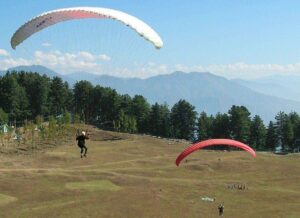Last Updated on July 21, 2021 at 10:22 pm
Fisheries sector has always played a very significant role in the economy. It has been recognized as a powerful source of income as well as employment.
A German biologist Johann Jakob Heckel published a book, Fische aus Caschmir in 1838 in which he mentioned that there is 16 fish species in Kashmir, 12 of which were of the snowtrout genus Schizothorax.
But to a utter surprise, Feroz Ahmad Bhat, an assistant professor and head of fisheries resource management at the Sher-e-Kashmir University of Agricultural Sciences and Technology (SKUAST) said that now only five of them can be found. He further said that even these remaining fishes are declining.
Problems like introduction of non-native species, rapid shrinking of lakes, water pollution and the new emerging problem of riverbed mining leading to the decline in fishes.
The rock or stone crushing have been increased in the Jammu and Kashmir creating a cause of slow death of fishes. The Veshav River in south Kashmir, a major tributary of the Jhelum and its waters are home to native snowtrout, as well as brown and rainbow trout, which were introduced to Kashmir. Along a 35-kilometre stretch of the Veshav, there are six points where boulders and gravel are taken from the river and crushed.
“Two of these stone crushers are along the 15-kilometre stretch of the stream from Aharbal [a hill station] where trout thrive,” said Shabir Ahmad, an inspector in the Jammu and Kashmir Department of Fisheries whose job is to monitor the Veshav. “And four others are located along the stretch populated by Schizothorax, which also need trout-like habitat to breed.”
Shabir further said that Schizothorax and trout depend on gravel and boulders for their feed and to breed. “They need cold water, food of aquatic insects and crustaceans, which is largely found on the rocks”. He further added that extraction of such material is affecting their survival.
Shabir said that there are three stone-crushing machines on the banks of the ‘Bringi’, another major river in the area and ‘Lidder’ river which is said to be home to the finest trout in the world, has two crushers, now a familiar sight across the region’s rivers and streams.
Thus the stone crushing is creating massive hindrance in the survival of the fishes and is polluting the waters.
Moreover, administration created new rules for stone crushers and ‘hot and wet mixing plants’ (where stones and gravel are processed), dispensing with the previous requirement for a licence. The rules simplify the process of establishing a unit by reducing the requisite clearances to just two documents: Consent to Operate (CTO) from the region’s Pollution Control Board and an NOC from the relevant district administrator.
Raja Muzaffar Bhat, a Right to Information and environmental activist, said that the No Objection Certificates (NOCs) for stone crushers should be repealed, and mining prohibited along the trout streams.
Riverbed mining is increasing at a high speed with up to 50 billion tonnes of sand and gravel being extracted every year.
Moreover the abrogation of article 370 created more trouble in this since the article allowed the local government to retain certain rights like limiting mining contracts to locals of J&K. But now this is open to people from outside the region.
A potential enabling factor in the current permitting boom may be the lack of implementing regulations in the 2018 Fisheries Act that replaced the Jammu and Kashmir Fisheries Act, 1903. “Though a new fisheries act is there, the rules that would have defined circumstances for its implementation are yet to be issued,” said Mohammad Hussain Wani, a fisheries scientist, who has now retired from the department. “This has created scope for violations.”
The situation, Wani added, is unlikely to improve unless the government takes a more serious view of the situation.
Over the past there has been decline in the species like snowtrout in the Kashmir Valley.
Introduction of brown trout in the early 1900s affected the breeding success of Schizothorax species.
In the section of the river populated by Schizothorax, there are around 450 fishers registered with the fisheries department. “They catch around 150 tonnes of fish annually,” said Ahmad, the Department of Fisheries official. Activist Bhat said that there is a quick need to keep a check on indiscriminate mining.



